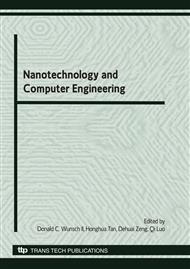p.294
p.300
p.304
p.309
p.314
p.320
p.325
p.329
p.335
Research on Evaluation of Economics of Product Quality Based on Fuzzy Theory
Abstract:
As the consumptive concept increasingly matured, the product quality and the economics of quality has been an important aspect in the economical development. The paper laid emphasis on the research of comprehensive evaluation of economics of quality. It established the evaluation index system that can effectively indicate the conditions of economics of quality, measured the economics of quality comprehensively and quantitatively. A fuzzy evaluation model which can quantitatively evaluate the economics of quality was also built up. The feasibility and effectiveness of the model was also proved by a material example.
Info:
Periodical:
Pages:
314-319
Citation:
Online since:
June 2010
Authors:
Keywords:
Price:
Сopyright:
© 2010 Trans Tech Publications Ltd. All Rights Reserved
Share:
Citation:


